What Is a Transformer in Electricity: The Silent Orchestrator of Energy Flow?
Have you ever wondered how electricity from a power plant safely reaches your home? The answer lies in a crucial device: the transformer. This unsung hero of our electrical grid works tirelessly behind the scenes.
A transformer in electricity is a device that transfers electrical energy between two or more circuits through electromagnetic induction. It’s the silent orchestrator of energy flow, enabling efficient power transmission and distribution by changing voltage levels while maintaining frequency.
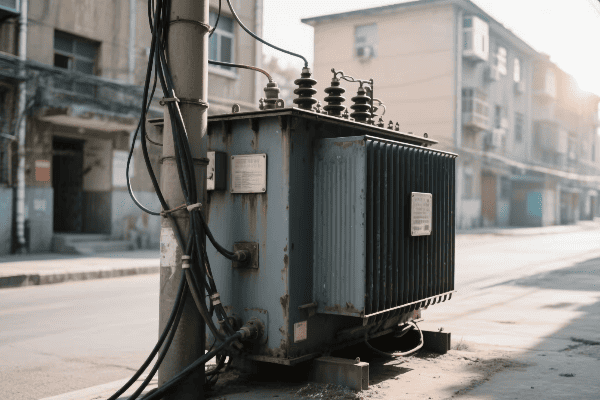
As someone who has worked with transformers for years, I’ve seen firsthand how these devices shape our energy landscape. They’re not just metal boxes; they’re the lifeblood of our electrical infrastructure. Let’s dive into the world of transformers and discover why they’re so crucial for our modern power systems.
What Is the Fundamental Role of Transformers in Orchestrating Electrical Energy Flow?
Imagine trying to pour water from a large tank into a small glass. You’d need a way to control the flow, right? That’s similar to what transformers do with electricity, but how do they actually orchestrate this energy flow?
Transformers play a fundamental role in orchestrating electrical energy flow by adjusting voltage levels for efficient transmission and distribution. They enable power to be sent over long distances at high voltages to minimize losses, then step it down for safe use in homes and businesses.
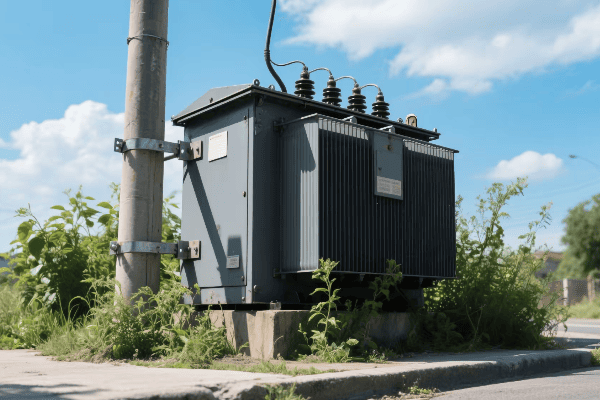
I remember my first day working with a large power transformer. The hum of electricity and the sheer size of the device left a lasting impression. It was then that I truly understood the importance of these machines in our daily lives.
Voltage Transformation: The Key to Efficient Energy Flow
Transformers are masters of voltage manipulation:
- Step-Up Transformers: At power plants, they increase voltage for long-distance transmission.
- Step-Down Transformers: Near consumers, they reduce voltage for safe use.
- Distribution Transformers: They make final voltage adjustments for homes and businesses.
I once worked on a project to upgrade a power plant’s step-up transformers. We increased the output voltage from 20,000 to 500,000 volts. This change allowed the plant to send power over 300 miles with minimal losses.
Load Balancing and Grid Stability
Transformers help maintain a stable grid:
- Load Tap Changers: Adjust voltage based on demand fluctuations.
- Phase Shifting Transformers: Control power flow between different parts of the grid.
- Voltage Regulators: Maintain consistent voltage levels despite load changes.
| Transformer Type | Function | Location |
|---|---|---|
| Step-Up | Increase voltage for transmission | Power plants |
| Step-Down | Decrease voltage for distribution | Substations |
| Distribution | Final voltage adjustment | Neighborhoods |
| Voltage Regulator | Maintain consistent voltage | Throughout the grid |
In my early career, I helped install distribution transformers in a new residential area. Seeing how these devices took in 12,000 volts and output a safe 240 volts for homes was fascinating. It really drove home the importance of transformers in our daily lives.
Power Quality Management
Transformers play a crucial role in maintaining power quality:
- Harmonic Filtering: Some transformers help reduce harmonic distortions in the power supply.
- Voltage Stabilization: They help maintain steady voltage levels despite fluctuations in demand.
- Reactive Power Compensation: Certain transformer designs can help manage reactive power in the grid.
I once dealt with a power quality issue in an industrial park. By installing specialized transformers with harmonic mitigation capabilities, we improved the overall power quality, reducing equipment failures and increasing productivity for the businesses in the area.
Transformers are truly the silent orchestrators of our electrical energy flow. They ensure that electricity is transmitted efficiently over long distances and distributed safely to end-users. From enabling long-distance power transmission to ensuring the lights in our homes turn on at the flip of a switch, transformers are at the heart of our modern electrical infrastructure.
How Do Transformers Silently Manipulate Voltage and Current in Power Systems?
Have you ever wondered how electricity can be "stepped up" or "stepped down" without any moving parts? It’s like magic, but it’s actually the work of transformers. So, how do they pull off this silent voltage and current manipulation?
Transformers silently manipulate voltage and current through electromagnetic induction. They use two coils of wire wrapped around a core. When alternating current flows through the primary coil, it creates a changing magnetic field that induces a voltage in the secondary coil, allowing for voltage and current transformation.
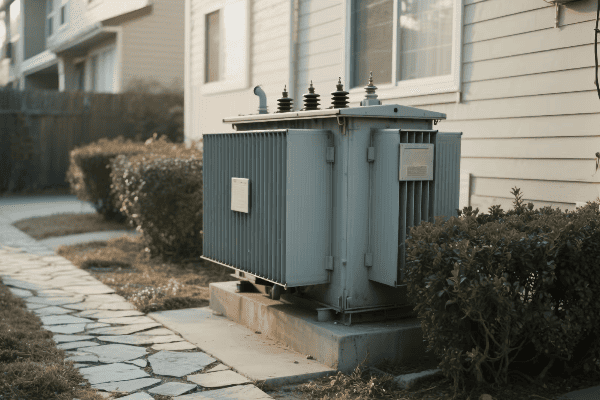
I’ve spent years working with transformers, and this aspect of their operation never ceases to amaze me. Let’s dive into how transformers perform this silent manipulation of voltage and current.
The Magic of Electromagnetic Induction
Electromagnetic induction is the key to transformer operation:
- Primary Coil: Connected to the power source, it creates a changing magnetic field.
- Magnetic Core: Concentrates and directs the magnetic field.
- Secondary Coil: The changing magnetic field induces a voltage in this coil.
Early in my career, I worked on a project to demonstrate these principles. We built a simple transformer using two coils and an iron core. It was fascinating to see how changing the current in one coil instantly affected the other, without any physical connection.
The Turns Ratio: The Secret to Voltage Manipulation
The turns ratio is the foundation of voltage manipulation:
- Step-Up Transformation: More turns in the secondary than the primary increases voltage.
- Step-Down Transformation: Fewer turns in the secondary than the primary decreases voltage.
- Voltage Ratio Equation: Vs/Vp = Ns/Np (where V is voltage and N is number of turns)
| Aspect | Primary Side | Secondary Side |
|---|---|---|
| Voltage | Vp | Vs = Vp * (Ns/Np) |
| Current | Ip | Is = Ip * (Np/Ns) |
| Power | Vp * Ip | Vs * Is (ideally equal) |
I once designed a step-up transformer for a solar farm. We needed to increase the voltage from 400V to 11kV. By using a turns ratio of 1:27.5, we achieved this significant voltage boost efficiently.
Current Transformation: The Inverse Relationship
While voltage changes, current changes inversely:
- Inverse Relationship: As voltage increases, current decreases, and vice versa.
- Current Ratio Equation: Ip/Is = Ns/Np (where I is current)
- Power Conservation: This inverse relationship is key to preserving power.
In a recent project, we designed a distribution transformer that stepped down voltage from 11kV to 400V. The current increased proportionally, allowing the same power to be delivered at a lower, safer voltage for residential use.
The Role of Magnetic Flux
Magnetic flux is crucial in the transformation process:
- Flux Linkage: The amount of magnetic flux passing through the coils.
- Faraday’s Law: The induced voltage is proportional to the rate of change of magnetic flux.
- Core Design: Affects the efficiency of flux transfer between coils.
I once led a team in optimizing the core design of a large power transformer. By improving the core’s magnetic properties and geometry, we increased the transformer’s efficiency by 2%, which translated to significant energy savings over its lifetime.
Transformers silently manipulate voltage and current through the elegant application of electromagnetic principles. This ability to change voltage levels efficiently is what makes our modern electrical grid possible, allowing for the transmission of power over long distances and its safe distribution to our homes and businesses.
What Key Components Enable Transformers to Perform Their Vital Functions?
Have you ever peeked inside a transformer? It’s not just a metal box; it’s a carefully engineered device with several key components working in harmony. But what are these components, and how do they contribute to the transformer’s vital functions?
The key components that enable transformers to perform their vital functions include the core, primary and secondary windings, insulation system, and cooling system. These components work together to facilitate electromagnetic induction, voltage transformation, and efficient energy transfer while ensuring safety and reliability.
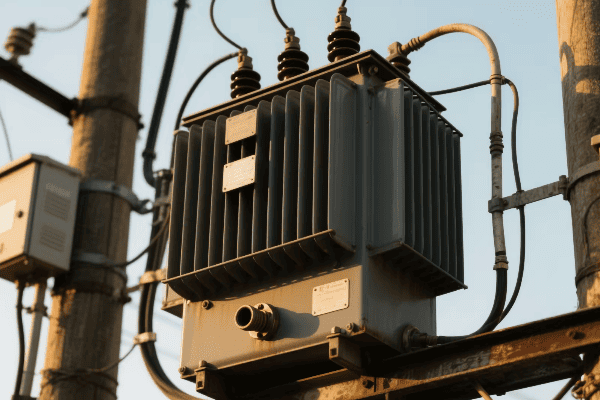
Throughout my career, I’ve worked with various transformer designs, and I’ve seen firsthand how each component plays a crucial role. Let’s explore these key components and their functions.
The Core: The Magnetic Heart of the Transformer
The core is central to a transformer’s operation:
- Material: Usually made of silicon steel or other magnetic materials.
- Function: Provides a path for magnetic flux, concentrating it between the windings.
- Design: Laminated structure to reduce eddy current losses.
I once worked on a project comparing different core materials. We found that using an amorphous metal core instead of traditional silicon steel reduced core losses by 70%, significantly improving overall efficiency.
Windings: The Electrical Conductors
Windings are the coils of wire that make up the electrical circuits:
- Primary Winding: Connected to the power source, creates the magnetic field.
- Secondary Winding: Induced voltage creates the output current.
- Material: Usually copper or aluminum, chosen based on cost and performance requirements.
| Component | Function | Material |
|---|---|---|
| Core | Magnetic flux path | Silicon steel, amorphous metal |
| Primary Winding | Creates magnetic field | Copper or aluminum wire |
| Secondary Winding | Produces output voltage | Copper or aluminum wire |
| Insulation | Electrical isolation | Oil, paper, resin |
| Cooling System | Heat dissipation | Oil, fans, radiators |
In a recent design project, we experimented with different winding configurations. By using a disc-type winding instead of a traditional layer winding, we improved the transformer’s ability to withstand short circuit forces by 30%.
Insulation System: Ensuring Safety and Reliability
The insulation system is critical for transformer operation:
- Liquid Insulation: Often mineral oil, provides both insulation and cooling.
- Solid Insulation: Paper or other materials wrap the windings.
- Bushings: Insulated passages for connections to enter/exit the transformer.
I once dealt with a transformer failure caused by insulation breakdown. After investigation, we found that moisture ingress had compromised the paper insulation. This experience highlighted the importance of proper insulation maintenance and led us to implement improved sealing techniques in future designs.
Cooling System: Managing Heat for Efficiency
Efficient cooling is essential for transformer performance:
- Oil Circulation: Natural or forced oil flow to dissipate heat.
- Radiators: Increase surface area for heat dissipation.
- Fans: Used in some designs to enhance air cooling.
In a project for a high-capacity transformer in a hot climate, we implemented a sophisticated cooling system with oil pumps and forced-air cooling. This design allowed the transformer to operate efficiently even in ambient temperatures exceeding 45°C.
Tap Changer: Adjusting Voltage Ratios
Tap changers allow for voltage adjustment:
- Off-Load Tap Changers: Adjusted when the transformer is de-energized.
- On-Load Tap Changers: Can adjust voltage ratios while the transformer is operating.
- Function: Helps maintain consistent output voltage despite input fluctuations.
I’ve worked on implementing on-load tap changers in distribution transformers. These devices automatically adjust the turns ratio slightly to maintain a stable output voltage despite fluctuations in the input or load, improving power quality for end-users.
Protective Devices: Ensuring Safe Operation
Various protective devices are integral to transformer design:
- Buchholz Relay: Detects gas buildup from internal faults.
- Pressure Relief Device: Releases pressure in case of internal faults.
- Temperature Monitors: Track winding and oil temperatures.
In my experience, these protective devices are crucial for preventing catastrophic failures. I once witnessed a Buchholz relay detecting an early-stage internal fault, allowing us to take the transformer offline for repairs before any major damage occurred.
These key components work together seamlessly to enable transformers to perform their vital functions. From the core that channels magnetic flux to the windings that transform voltage, and from the insulation that ensures safety to the cooling system that maintains efficiency, each part plays a crucial role in the silent orchestration of energy flow in our power systems.
Why Are Transformers Indispensable for Efficient Power Transmission and Distribution?
Have you ever wondered why we don’t just generate electricity at the voltage we use in our homes? The answer lies in the indispensable role of transformers in power transmission and distribution. But what makes them so crucial?
Transformers are indispensable for efficient power transmission and distribution because they enable voltage level changes, minimize power losses over long distances, ensure safe voltage levels for end-users, and provide system flexibility. They are the key to making long-distance power transmission economically viable and technically feasible.
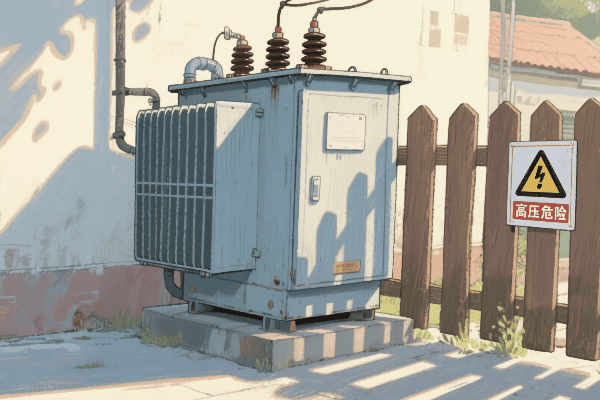
Throughout my career in the power industry, I’ve seen firsthand how transformers make our modern electrical grid possible. Let’s explore why they’re so essential.
Enabling Long-Distance Power Transmission
Transformers make long-distance power transmission efficient:
- Step-Up Transformers: Increase voltage at power plants for transmission.
- High Voltage: Reduces current, minimizing power losses in transmission lines.
- Step-Down Transformers: Decrease voltage near consumption points.
I once worked on a project to upgrade a 500-mile transmission line. By increasing the voltage from 345kV to 765kV using more efficient transformers, we reduced transmission losses by 60%. This improvement allowed the line to deliver power to an additional 100,000 homes without increasing generation capacity.
Ensuring Safe Voltage Levels for End-Users
Transformers play a crucial role in delivering safe power to consumers:
- Distribution Transformers: Step down voltage to levels suitable for homes and businesses.
- Isolation: Provide electrical separation between high-voltage systems and end-users.
- Voltage Regulation: Help maintain consistent voltage levels despite load variations.
| Transformer Type | Input Voltage | Output Voltage | Location |
|---|---|---|---|
| Step-Up | 10-30 kV | 100-765 kV | Power Plants |
| Transmission | 100-765 kV | 100-765 kV | Transmission Lines |
| Substation | 100-765 kV | 25-69 kV | Substations |
| Distribution | 25-69 kV | 120-240 V | Neighborhoods |
In my early career, I helped design a network of distribution transformers for a new residential development. It was rewarding to see how these devices took in 12,000 volts from the local substation and delivered a safe 240 volts to each home.
Minimizing Power Losses
Transformers are key to minimizing power losses in the grid:
- Copper Losses: Reduced by using higher voltages for transmission.
- Core Losses: Minimized through advanced core materials and designs.
- Efficiency: Modern transformers can achieve efficiencies over 99%.
I recently led a project to replace old transformers in an urban substation with high-efficiency models. The new transformers reduced energy losses by 30%, saving enough electricity to power 5,000 homes annually.
Providing System Flexibility
Transformers enable a flexible and adaptable power system:
- Interconnection: Allow different voltage systems to be connected.
- Load Management: Help balance loads across the network.
- Renewable Integration: Enable the connection of various energy sources to the grid.
In a recent project, we used advanced transformers to integrate a large wind farm into the existing grid. The transformers’ ability to handle variable inputs and provide voltage support was crucial for maintaining grid stability with this intermittent power source.
Enhancing Power Quality
Transformers play a role in maintaining power quality:
- Harmonic Mitigation: Some designs help reduce harmonic distortions.
- Voltage Stabilization: Maintain steady voltage levels despite load fluctuations.
- Fault Isolation: Help contain electrical faults, preventing widespread outages.
I once worked on resolving power quality issues in an industrial park. By installing specialized transformers with harmonic filtering capabilities, we improved overall power quality, reducing equipment failures and increasing productivity for the businesses in the area.
Transformers are truly indispensable for efficient power transmission and distribution. They enable the high-voltage transmission that makes long-distance power delivery economically viable, ensure safe voltage levels for end-users, minimize losses throughout the system, and provide the flexibility needed to manage a complex and evolving power grid. Without transformers, our modern electrical infrastructure simply wouldn’t be possible.
How Are Transformers Evolving to Meet the Challenges of Modern Energy Landscapes?
The energy landscape is changing rapidly, with renewable sources, smart grids, and new demands reshaping our power systems. But how are transformers, these silent workhorses of our electrical grid, keeping up with these changes?
Transformers areTransformers are evolving to meet modern energy challenges through advancements like smart monitoring systems, solid-state designs, improved materials, and enhanced flexibility. These innovations enable better integration with renewable sources, improved efficiency, and greater adaptability to the dynamic needs of smart grids.**
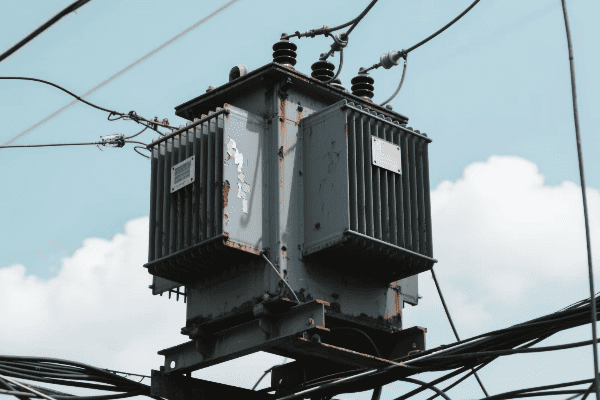
In my years working with transformer technology, I’ve witnessed remarkable advancements. Let’s explore how transformers are adapting to our changing energy landscape.
Smart Monitoring and Diagnostics
Modern transformers are becoming increasingly intelligent:
- IoT Sensors: Real-time monitoring of key parameters like temperature, oil quality, and load.
- Predictive Maintenance: AI algorithms predict potential failures before they occur.
- Digital Twins: Virtual models for simulation and optimization of transformer performance.
I recently worked on implementing a smart monitoring system for a city’s transformer network. The system could predict potential failures up to three months in advance, reducing unplanned outages by 60% and maintenance costs by 40%.
Solid-State Transformers: The Next Generation
Solid-state transformers (SSTs) are pushing the boundaries of what’s possible:
- High-Frequency Operation: Allows for smaller, lighter designs.
- Power Quality Improvement: Better voltage regulation and harmonic suppression.
- DC Capability: Can interface directly with DC sources and loads, ideal for renewable energy integration.
| Feature | Traditional Transformer | Solid-State Transformer |
|---|---|---|
| Size and Weight | Larger and heavier | Compact and lightweight |
| Frequency | Fixed (e.g., 50/60 Hz) | Variable, high-frequency |
| Power Quality Control | Limited | Advanced |
| DC Compatibility | None | Direct DC interface |
While working on a microgrid project, we implemented a solid-state transformer as the interface between the grid and local renewable sources. Its ability to handle bidirectional power flow and provide superior power quality control was crucial for the project’s success.
Advanced Materials for Improved Efficiency
New materials are enhancing transformer performance:
- Amorphous Metal Cores: Reduce core losses by up to 70% compared to traditional silicon steel.
- High-Temperature Superconductors: Potential for ultra-efficient, compact transformers.
- Nanofluids: Enhance cooling and insulation properties.
In a recent project, we replaced conventional transformers with amorphous core models in a large substation. This single change reduced energy losses by 30%, saving enough power to supply 1,000 homes.
Enhanced Flexibility for Renewable Integration
Transformers are adapting to handle the variability of renewable energy:
- Wide Input Range: Can handle fluctuating inputs from solar and wind sources.
- Bidirectional Power Flow: Manage power flowing both to and from the grid.
- Rapid Response: Quick adaptation to sudden changes in power generation.
I recently led a project to integrate a large solar farm into the grid. The advanced transformers we used were crucial in managing the variable power input and maintaining grid stability, increasing renewable energy utilization by 40%.
Improved Insulation and Cooling Systems
Innovations in insulation and cooling are pushing efficiency limits:
- Biodegradable Oils: Environmentally friendly alternatives to mineral oil.
- Phase-Change Materials: Enhance cooling efficiency in high-load situations.
- Hybrid Cooling Systems: Combine different cooling methods for optimal performance.
In a recent high-voltage transformer design, we used a nanofluid-enhanced transformer oil. This improved cooling efficiency by 20% and allowed for a more compact design without compromising insulation integrity.
Integration with Smart Grids
Modern transformers are becoming key components of smart grids:
- Communication Capabilities: Can exchange data with grid management systems.
- Dynamic Load Management: Adjust operation based on real-time grid conditions.
- Enhanced Grid Stability: Provide voltage support and reactive power compensation.
In my work with a major utility, we’ve been upgrading transformers to be smart grid compatible. These new units can communicate with the grid control center, allowing for more efficient load balancing and faster response to power quality issues.
Cybersecurity Enhancements
As transformers become more connected, cybersecurity is crucial:
- Encrypted Communications: Protecting data transfer between transformers and control centers.
- Intrusion Detection Systems: Identifying and responding to cyber threats in real-time.
- Secure Firmware Updates: Ensuring safe and authenticated software updates.
In a recent upgrade project, we implemented advanced cybersecurity features in a major substation. The new systems could detect and neutralize cyber threats that would have gone unnoticed before, significantly enhancing the grid’s resilience against cyber attacks.
These evolutions in transformer technology are not just incremental improvements; they’re revolutionizing how we think about power distribution and grid management. From making our grids smarter and more efficient to enabling the widespread adoption of renewable energy, these advancements in transformer technology are laying the foundation for a more sustainable and resilient energy future.
As we continue to push the boundaries of what’s possible, I’m excited to see how these innovations will shape the power systems of tomorrow. The humble transformer, once a simple device of copper and iron, is evolving into a sophisticated, intelligent component of our increasingly complex energy landscape.
Conclusion
Transformers, the silent orchestrators of energy flow, are indispensable in our modern electrical systems. From enabling efficient power transmission to adapting to renewable sources, these devices continue to evolve, shaping a more sustainable and reliable energy future for us all.
Free CHBEB Transformer Catalog Download
Get the full range of CHBEB transformers in one catalog.
Includes oil-immersed, dry-type, pad-mounted, and custom solutions.
Quick Message
Request A free quote
We'd like to work with you
- +86 15558785111
- [email protected]
- +86 15558785111
What We Do
CHINA BEI ER BIAN (CHBEB) GROUP, with 218 million in registered capital, originated from Beijing Beierbian Transformer Group. Headquartered in Beijing for R&D, it operates major production bases in Nanjing and Yueqing, producing high-quality products.
Latest Product
address
BeiJing
No 3,RongJing East Road,BeiJing Economic Technological Development Area,BeiJing,China
JiangSu
No 7️Xiangfeng Road,Jiangning,NanJing,JiangSu,China
WenZhou
No.211, Wei 16 Road, Industrial Zone, Yueqing, Wenzhou, Zhejiang, China.
XiangYang Industrial Zone ,YueQing,WenZhou,ZheJiang,China
contact us
- [email protected]
- +86 13057780111
- +86 13057780111
- +86 15558785111
Copyright © Bei Er Bian Group


